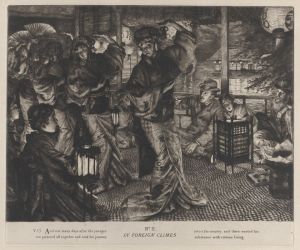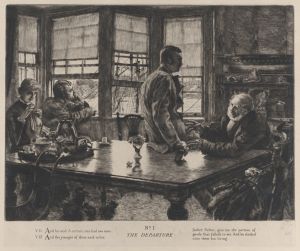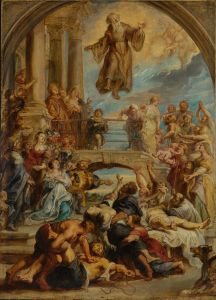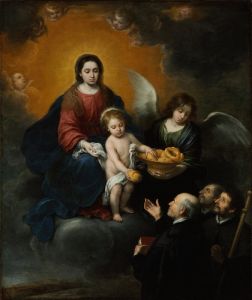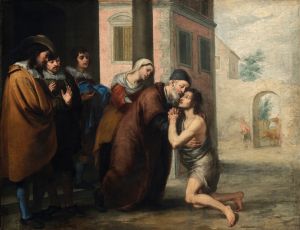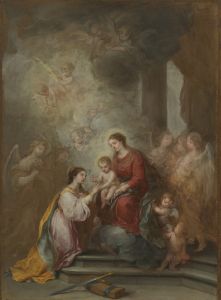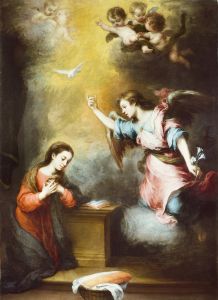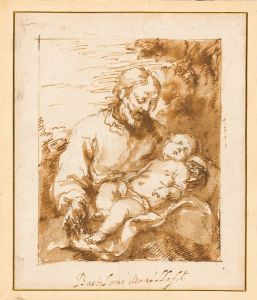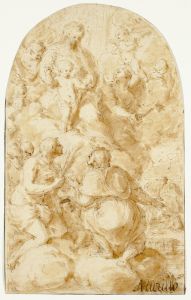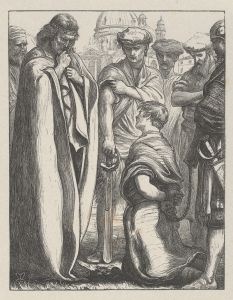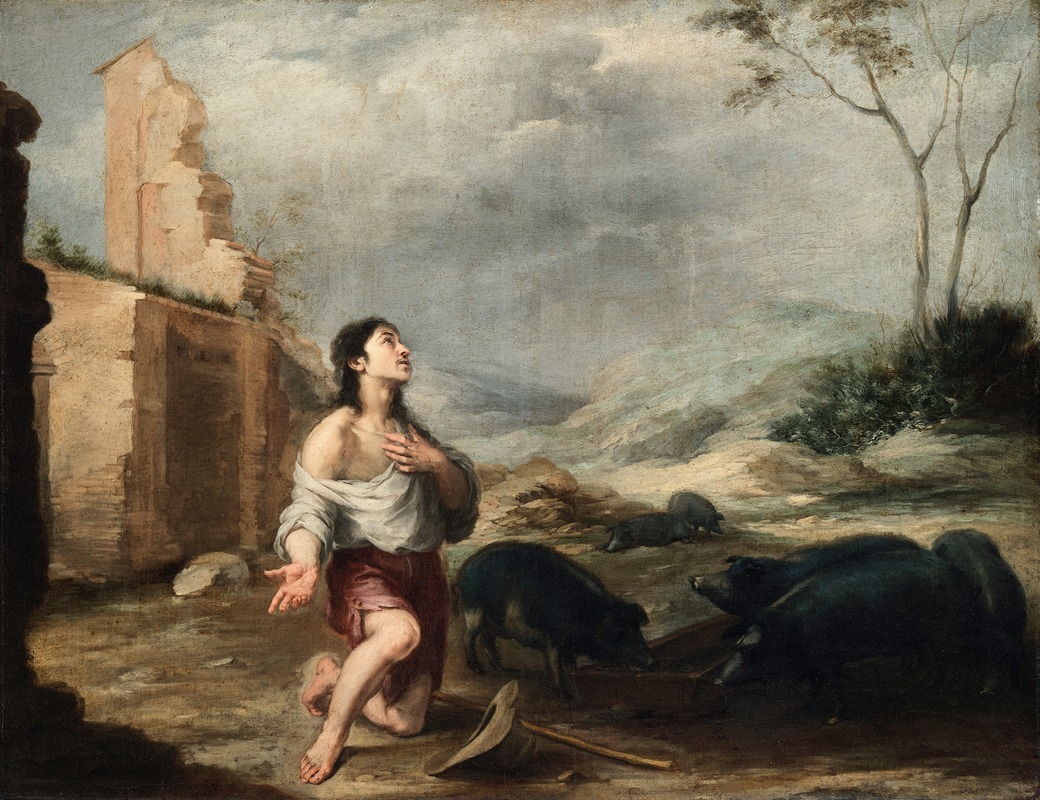
The Prodigal Son Feeding Swine
A hand-painted replica of Bartolomé Estebán Murillo’s masterpiece The Prodigal Son Feeding Swine, meticulously crafted by professional artists to capture the true essence of the original. Each piece is created with museum-quality canvas and rare mineral pigments, carefully painted by experienced artists with delicate brushstrokes and rich, layered colors to perfectly recreate the texture of the original artwork. Unlike machine-printed reproductions, this hand-painted version brings the painting to life, infused with the artist’s emotions and skill in every stroke. Whether for personal collection or home decoration, it instantly elevates the artistic atmosphere of any space.
"The Prodigal Son Feeding Swine" is a painting by the Spanish Baroque artist Bartolomé Estebán Murillo. Created around 1660, this work is part of a series of paintings that Murillo produced depicting the parable of the Prodigal Son, a story from the Christian Bible found in the Gospel of Luke (Luke 15:11-32). The series illustrates the narrative of a young man who squanders his inheritance and eventually returns home in repentance.
In "The Prodigal Son Feeding Swine," Murillo captures the moment when the prodigal son, having wasted his fortune, is reduced to working as a swineherd. This scene is significant as it represents the lowest point in the young man's life, highlighting his destitution and despair. The painting is notable for its emotional depth and the artist's ability to convey the protagonist's plight through his expressive use of color, light, and composition.
Murillo's depiction of the prodigal son is characterized by a sense of realism and empathy. The young man is shown in ragged clothing, kneeling on the ground as he tends to the pigs. His downcast expression and the desolate landscape around him emphasize his misery and regret. The pigs, a symbol of his degradation, are rendered with careful attention to detail, enhancing the overall impact of the scene.
The painting is executed in oil on canvas, a medium that Murillo mastered during his career. His use of light and shadow creates a dramatic contrast that draws the viewer's attention to the central figure of the prodigal son. The soft, warm tones typical of Murillo's palette add to the painting's emotional resonance, making the viewer feel the young man's sorrow and longing for redemption.
Bartolomé Estebán Murillo (1617-1682) was one of the leading artists of the Spanish Golden Age. He is renowned for his religious works, genre scenes, and portraits. Murillo's ability to capture human emotion and his skillful use of color and light have earned him a lasting place in the history of art. His works are celebrated for their tenderness and humanity, qualities that are evident in "The Prodigal Son Feeding Swine."
The painting is part of the collection at the National Gallery of Ireland in Dublin. It is one of several works by Murillo that depict the story of the prodigal son, each illustrating different episodes from the parable. This series is considered one of Murillo's masterpieces, showcasing his narrative ability and his deep understanding of human nature.
"The Prodigal Son Feeding Swine" remains an important example of Murillo's work and a significant piece in the broader context of Baroque art. It continues to be studied and admired for its artistic merit and its poignant portrayal of a timeless biblical story.





